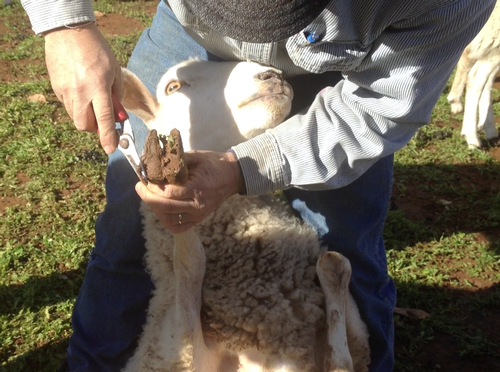Posts Tagged: shepherd
10,000 Hours of Farming
In his book Outliers: The Story of Success, Malcom Gladwell writes that, “To become a chess grandmaster also seems to take about ten years. (Only the legendary Bobby Fisher got to that elite level in less than that amount of time: it took him nine years.) And what’s ten years? Well, it’s roughly how long it takes to put in ten thousand hours of hard practice. Ten thousand hours is the magic number of greatness.” While Gladwell is discussing outliers – those individuals in specific professions that stand head-and-shoulders above their peers, I think the “10,000 Hour” rule applies to many activities, including – in my case – sheep farming.
I don’t claim to be an expert shepherd – I’m often humbled by the realization of how much I don’t know about raising sheep. However, I estimate that since I started raising sheep on a commercial scale in 2006, I’ve spent in the neighborhood of 14,000 hours doing everything from moving portable electric fence to trimming hooves to analyzing the economics of my business. And while I still have more questions than answers about how to make my living by raising sheep, there are parts of this business that are far easier now that I’ve invested so much time!
Some of the benefit is akin to muscle memory. If you repeat a physical motion enough times – like playing the piano – eventually your muscles remember where to place your limbs and digits. These movements become second nature. Last week, we completed our annual task of trimming feet, a process that involves tipping every ewe onto her backside and trimming all four of her hooves. With 250 +/- sheep, this meant trimming approximately 1,000 feet! Just 5 years ago, such a task would have left my back sore for several days – and it would have taken three people just to treat our flock of 100 ewes in a single day. Last week, with help from a few friends, we treated 250 animals in about 8 hours.
Building electro-net fencing is another example of increasing efficiency. I estimate that I put up and take down my 164-foot rolls of electro-net between 700 and 800 times in a year. When I started learning how to use the fencing 7 years ago, a 6-net paddock (which encloses about 1.25 acres) took me several hours. Two weeks ago, I built a 16-net paddock (enclosing 9.25 acres) in less than three hours. Once again, I’ve now built enough fence that I learned how to be as efficient as possible.
Some of the benefit of putting in the hours comes from learning from experience and knowing what to expect in certain situations. When we first started using livestock guardian dogs to protect our sheep from predators, I was always extremely worried when a dog got out of my pastures. Typically, I’d drop everything else I was doing and try to catch the dog. To my dogs, this became a great game – I could almost see them thinking, “let’s see how long he’ll follow me!” The dogs would eventually decide to come back on their own, but it took me several years to realize this fact. Last month, one of the dogs got out while I was sorting our rams from our ewes in a pasture. Rather than put the already-separated rams back with the ewes and track down the dog, I continued with my task. By the time I’d sorted the last ram from the flock, the dog had returned from his jaunt and was ready to be back with his sheep. I realize that this story doesn’t sound like much – after all, it only saved me 30 minutes of not chasing the dog all over the ranch. However, I find that each time I can apply my accumulated experience and knowledge I save myself (and my animals) time and stress – and these savings add up like compounding interest!
Finally, spending time working on the business is as important as spending time working in the business. When I’m working “in” the business, I’m doing many of the things I’ve discussed above. When I’m working “on” the business, I’m thinking about bigger questions – how should I market my lambs next year, for example. I’ll admit I’d much rather spend the day working with my sheep than in front of my computer, but I find that the quality of my “on-the-business” work improves the more I do it as well. For instance, we’ve decided this year to keep our sheep year-round on properties much closer to home, which will reduce our overhead costs substantially. We’ve adjusted the scale of our operation to fit the land we can access without putting the sheep on a trailer.
I suppose that this idea is at least indirectly related to scale. The more sheep you raise – or the more carrots you grow – the more quickly you cross the 10,000-hour threshold. Regardless of size, however, the investment of time in farming eventually pays dividends in skill level (and hopefully in profitability).
The purpose of these stories is not to brag about my prowess as a shepherd but rather to illustrate that there is no substitute for putting in the time as farmers. While I believe strongly in the power of planning and analysis, at some point we all have to implement our plans – we have to farm! If we’re observant – and humble enough to learn from our mistakes – this investment of time will pay off. While 10,000 hours of working with sheep won’t make me as famous (or as wealthy) as Buster Posey (the Giants MVP catcher for you non-baseball fans) it will make me a better farmer!




